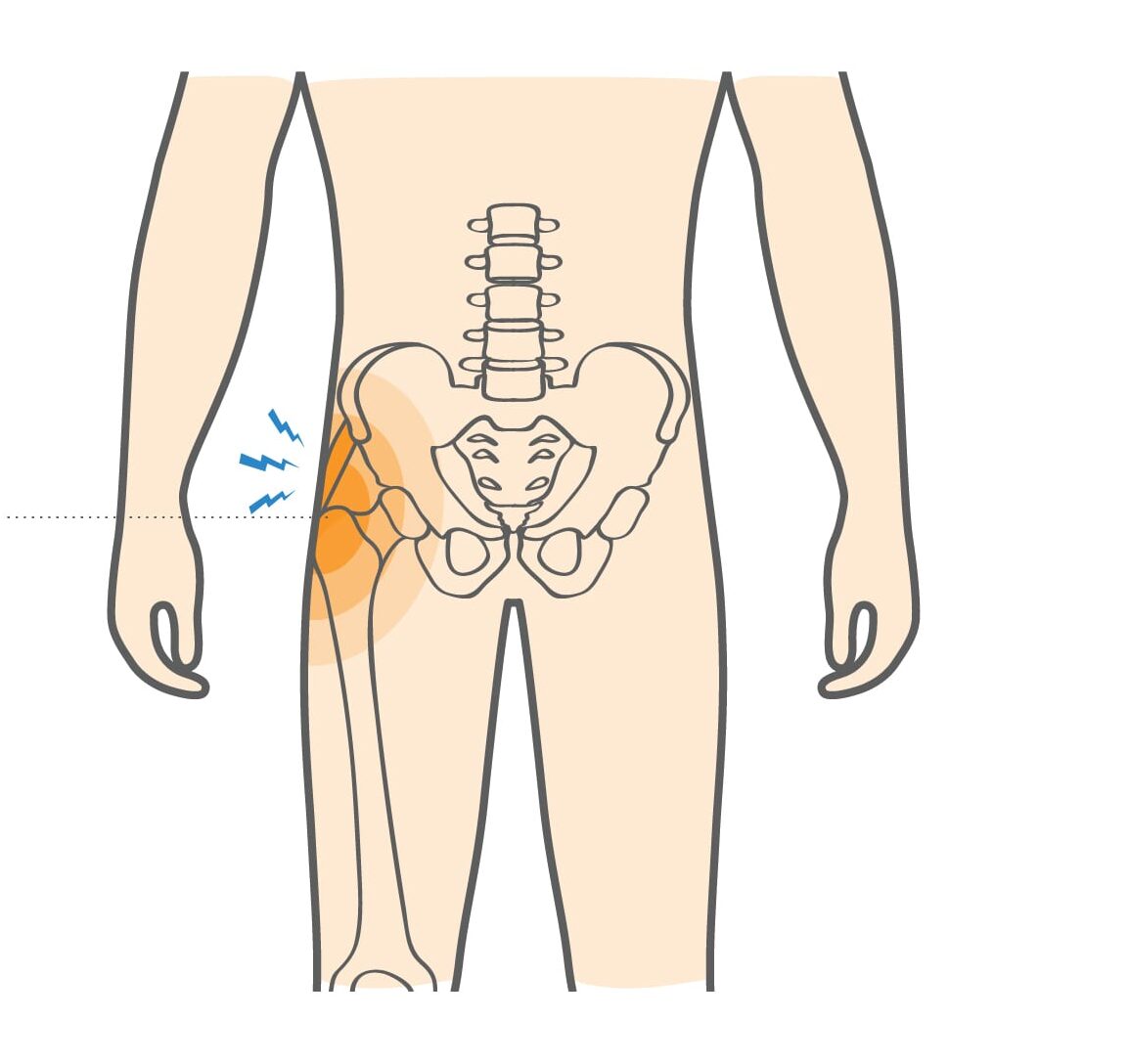The greater trochanter is part of the hip and upper femur, the part that you can feel as a hard area on the outside of your hip. It serves as a point of attachment for the gluteal tendons. A common causes of pain on the outside of the hip is trochanteric bursitis and gluteal tendinitis both from chronic inflammation or from direct trauma. However, a more serious direct blow to this area, such as a fall from a height, can cause a fracture (broken bone) of the greater trochanter.
Trochanteric Fracture Causes, Symptoms & Treatment Options
The greater trochanter is part of the hip and upper femur, the part that you can feel as a hard area on the outside of your hip. It serves as a point of attachment for the gluteal tendons. A common causes of pain on the outside of the hip is trochanteric bursitis and gluteal tendinitis both from chronic inflammation or from direct trauma. However, a more serious direct blow to this area, such as a fall from a height, can cause a fracture (broken bone) of the greater trochanter.
Overview
Overview

What causes Trochanteric Fracture?
Isolated fractures of the greater trochanter are not common but can occur either as part of a more complex fracture of the hip, or occasionally as an isolated problem. Typically, this is from a high energy injury such as a fall directly onto the side of the hip (as in falling off a ladder), or involvement in a motor vehicle accident. Although more common in older patients, even young people with high energy trauma can break the greater trochanter, or their hip.
Symptoms
Patients that sustain a fracture of the greater trochanter will have severe pain directly over the outside of the hip. This area will be quite tender to touch. Patients will have significant pain bearing weight but will typically be able to do so. If the pain extends into the groin it might suggest a more complex hip fracture.
Other symptoms of a trochanteric fracture of the hip include :
- Painful limp when trying to bear weight
- Bruising or swelling on the outside of the hip
When to see a doctor
If you’ve experienced a direct blow to the outside of your hip and have immediate pain, swelling, and difficulty weight-bearing on the injured side, you may well have sustained a fracture of the greater trochanter, or your hip. You should be evaluated without delay and see a doctor. On nights, weekends and after hours you may try to find an urgent care center or if not, then you should be seen in your local emergency department. If you cannot bear weight without severe pain, don’t try to do. If you have crutches and know how to use them safely, then do so without putting weight on the injured leg. If you don’t, then either have a family member help you into a vehicle or you may need to call an ambulance (911). A doctor (on occasion a Physician Assistant or Nurse Practitioner) will then examine your hip looking for areas of tenderness and will recommend obtaining an x-ray. On occasion, if the x-ray in normal but there is still suspicion that there is a fracture of the greater trochanter, a CAT scan or MRI may be necessary.
Non-operative treatment
If an isolated fracture of the greater trochanter is diagnosed by a doctor, a decision will be made whether or not it will require operative repair. If the fracture is not displaced (seen as a line on the x-ray but without any separation) the doctor may initially suggest watching waiting and a repeat x-ray in a few days to assure the fracture does not separate. If this is the case, your doctor will likely recommend that you use crutches or a walker and limit weight bearing on the injured side. Your doctor will also initially recommend that you rest, apply ice and use pain medication if needed. You will also need to have a follow up visit within a week or 10 days to repeat the x-ray and assure the fracture is healing without separation. If separation is detected on the follow-up x-ray, then surgical repair may be necessary. Once the fracture is well on its way to healing, some physical therapy may be helpful to regain flexibility and strength.
Surgical Treatment
If a fracture of the greater trochanter is detected on the initial x-ray, and if the fracture shows separation of the broken bones or if a displacement (separation) of the fracture is seen on any follow up x-rays – surgery may become necessary. Most often, isolated fractures of the greater trochanter can be repaired with 2 or 3 lag screws to close the separation and provide stability of the bone until initial healing occurs in about 6 to 8 weeks.
Recovery
With proper treatment, fractures of the greater trochanter, whether treated non-operatively or surgically will heal without difficulty. Once your doctor determines, from repeat x-rays, that the bones are healed, they may recommend a course of physical therapy to improve range of motion and restore strength. Most fractures will be healed, and full recovery completed by 4 – 6 months.

